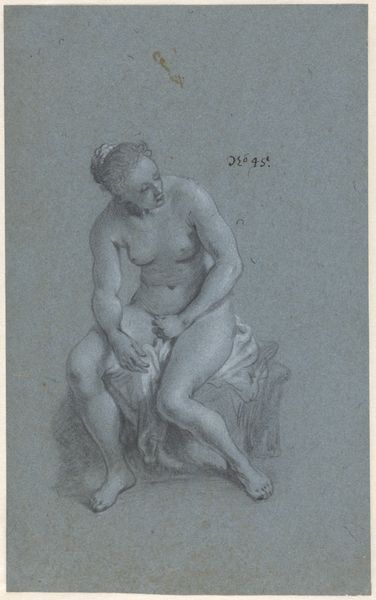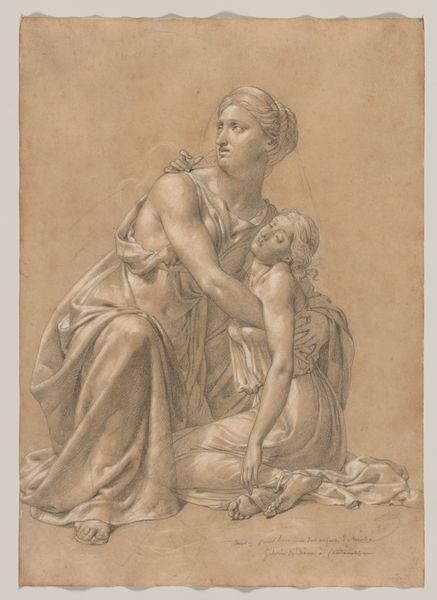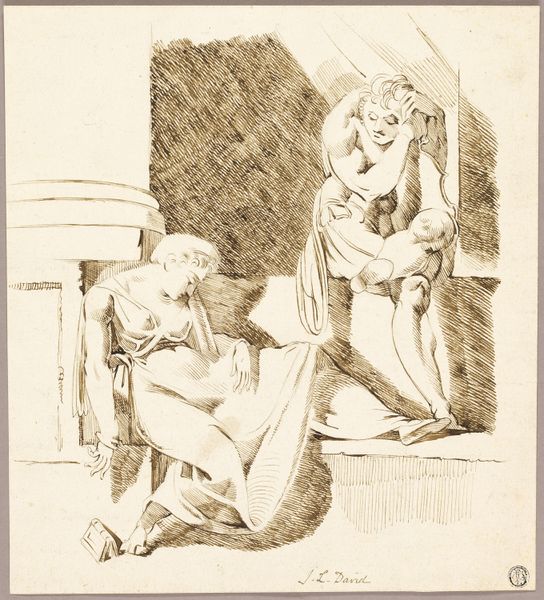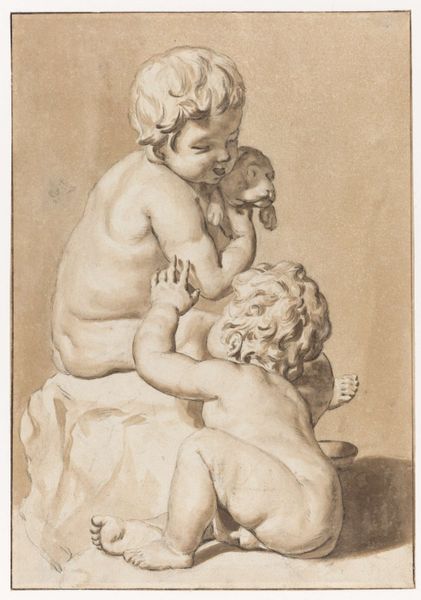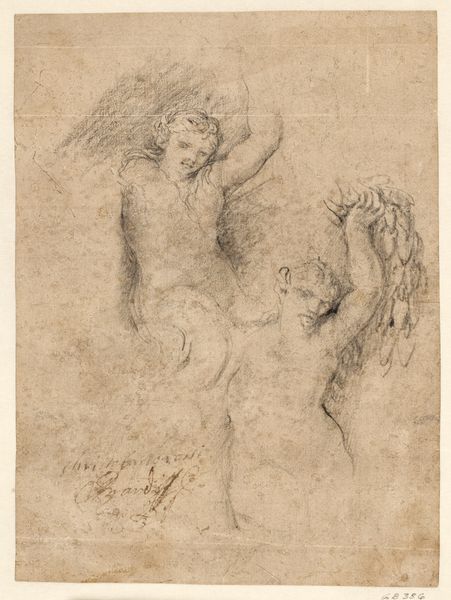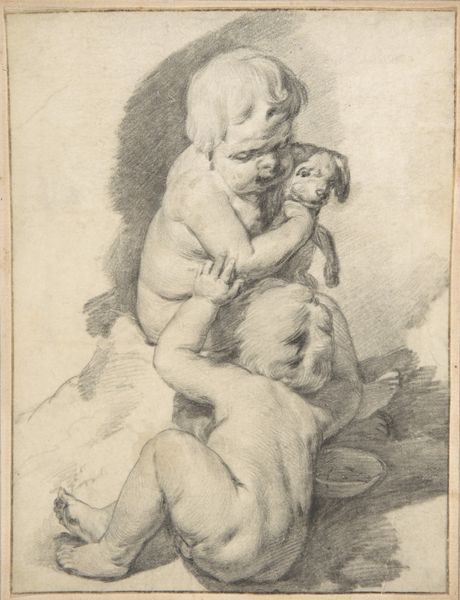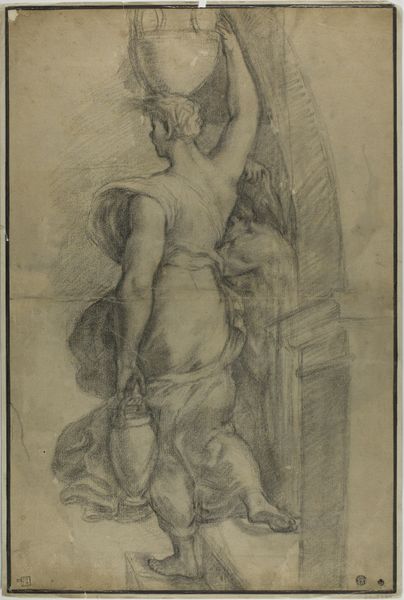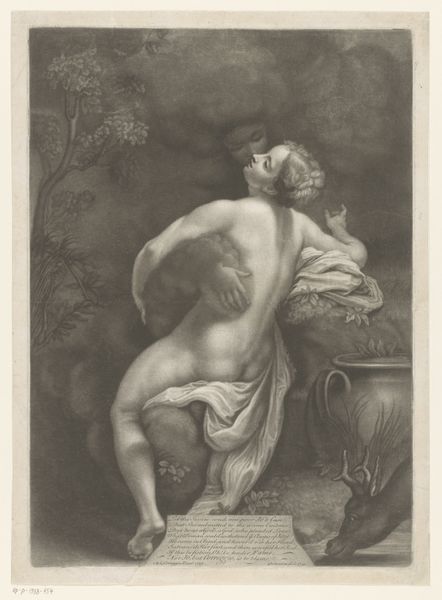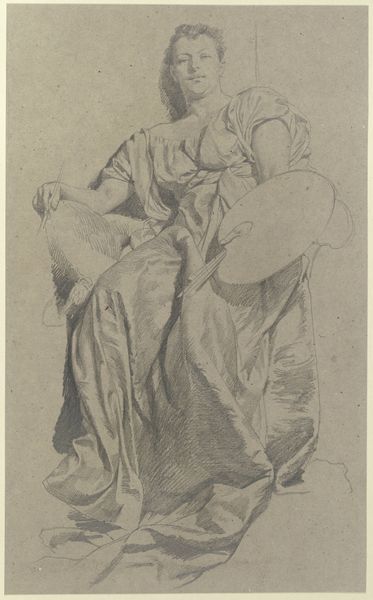
Dimensions: 332 × 231 mm
Copyright: Public Domain
Editor: This is Richard Earlom’s "Weeping Allegorical Female Figure with Putto," created in the 1770s. It's a drawing made with graphite, chalk, and other media on paper. The overwhelming mood to me is sadness; what’s striking is the raw emotion captured. What do you see in this piece? Curator: Indeed, sadness is a prominent theme. Beyond the immediate emotional impact, I'm drawn to the layered symbolism within this seemingly simple composition. Notice how the weeping woman, a clear personification of grief, is paired with a slumbering putto, or cherubic figure. This juxtaposition carries a weighty message steeped in art-historical precedent and cultural memory. The putto, traditionally associated with love and innocence, is here shrouded in shadow. Editor: So, it’s not just a sad lady, but something deeper? Curator: Precisely. The piece exists within the broader context of allegory, inviting us to consider larger themes like loss, mourning, and even the transience of joy. Think about how weeping figures appear throughout history, particularly in depictions of religious or historical tragedies. Does this echo any specific cultural memory for you? Editor: I guess it reminds me a little of depictions of Mary Magdalene at the foot of the cross? Curator: An excellent association. Consider too the stylistic influences at play – echoes of the Baroque dramatic flair mingling with a nascent Romantic sensibility focused on emotion and the individual experience. These clues can open doors to a fuller understanding of what this image might have meant, and continues to mean, to viewers across time. Editor: I see, so it's like a whole web of connected meanings and emotions passed down through art. It’s far more intricate than I initially realized. Curator: Exactly. These images embed themselves in our collective psyche. Now you can see how Earlom uses familiar imagery to communicate very powerful emotions, relying on our learned understanding of visual language. Editor: I will definitely look at allegorical pieces differently now.
Comments
No comments
Be the first to comment and join the conversation on the ultimate creative platform.


